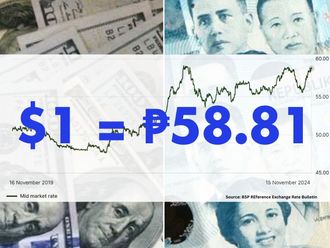The Saudi economy is gradually but steadily overcoming the unemployment challenge amongst locals. Nevertheless, the job headache remains serious reflecting the country’s demographic statistics.
Similar to other Gulf Cooperation Council (GCC) countries, unemployment statistics are not an exact science in Saudi Arabia. Nevertheless, it is fair to claim that the unemployment figure is no longer in double digits. By one account, the jobless figure stood at a record 11.2 per cent in 2007. The estimate applies to active job seekers, as the figure would be worse by including graduate females preferring family over employment.
Not surprisingly, firm oil prices for several years in a row with all their positive impact on treasury income and thereby governmental spending had contributed in ensuring steady economic growth levels. Nowadays, growth rates of Saudi Arabia’s gross domestic product (GDP) are second only to those of Qatar within GCC countries.
Real, adjusted for inflation GDP growth rates stood at 6.8 per cent and 4.6 per cent in 2011 and 2010, respectively. In addition, the relatively high oil prices have paved the way for registering a staggering $82 billion (Dh301.11 billion) surplus in fiscal year, with revenues and expenditures standing at $296 billion and $214 billion, respectively. What’s more, in the absence of inflationary threats, the macroeconomic situation looks near perfect in the kingdom.
To be sure, the mighty Saudi economy is noted for generating a substantial number of employment opportunities annually and in considerable numbers over the past few years thanks to positive spillover effects of solid oil prices. However, the utmost majority of job openings end up for expatriates and for understandable reasons.
Migrant workers are prepared to accept almost all kinds of job opportunities, but the same cannot be said of Saudi nationals. Therefor, it is not surprising to know that the Saudi job market boasts some 8 million expatriates versus 4.5 million locals. Saudi nationals comprise a mere 10 per cent of employment in the country’s private sector.
The trouble is unemployment poses a challenge at a time when a large section of the population have not yet entered the job market. Latest statistics suggest that almost 30 per cent of the Saudi population is below 14 years of age. Saudi Arabia boasted total population of 26.5 million in July.
Undoubtedly, the figures are primarily reserved for locals, as most expatriates residing in the kingdom happen to be of working age. Still, some migrant workers, notably professionals, have their families with them in Saudi Arabia.
The real challenge relates to unemployment among the youth, with credible sources putting it at 28.2 per cent for those falling in the age bracket of 15 to 24. This translates into Saudi Arabia receiving a No 17 ranking worldwide among countries suffering from the worst jobless figures for youth.
Happily enough, the Saudi market is showing exceptional signs with regard to creating jobs on the back of attractive economic results. According to Gulf Talent, a leading regional firm keeping track of developments of the GCC job market, the kingdom leads fellow GCC countries in creating fresh employment opportunities. The 2012 edition of “Employment and Salary Trends in the Gulf” points out that some 62 per cent of companies in the Kingdom increased their headcount in 2011 compared with 55 per cent in 2010.
The retail market is proving a key source of employment opportunities for locals and for good reasons. Currently, some 270,000 Saudis work in the retail sector, comprising some 17 per cent of 1.4 million. One thing is for sure, many Saudi nationals, especially the youth, have the desire for work and seek employment.












